The Toshiba TR200 3D NAND SSD Review: One Step Forward, One Step Back
by Billy Tallis on October 11, 2017 7:00 AM ESTSequential Read Performance
Our first test of sequential read performance uses short bursts of 128MB, issued as 128kB operations with no queuing. The test averages performance across eight bursts for a total of 1GB of data transferred from a drive containing 16GB of data. Between each burst the drive is given enough idle time to keep the overall duty cycle at 20%.
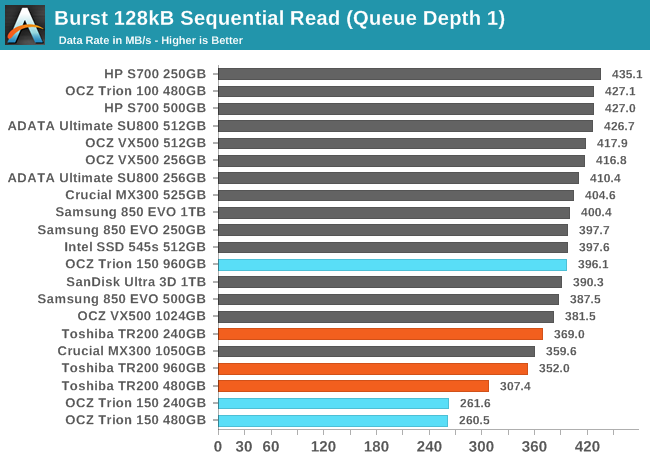
The burst sequential read performance of the TR200s is a significant improvement over the TR150 for the 240GB and 480GB models, but is a regression for the 960GB model. All of the TR200s are at the slow end of the chart, with the 480GB model lagging furthest behind its competitors.
Our test of sustained sequential reads uses queue depths from 1 to 32, with the performance and power scores computed as the average of QD1, QD2 and QD4. Each queue depth is tested for up to one minute or 32GB transferred, from a drive containing 64GB of data.
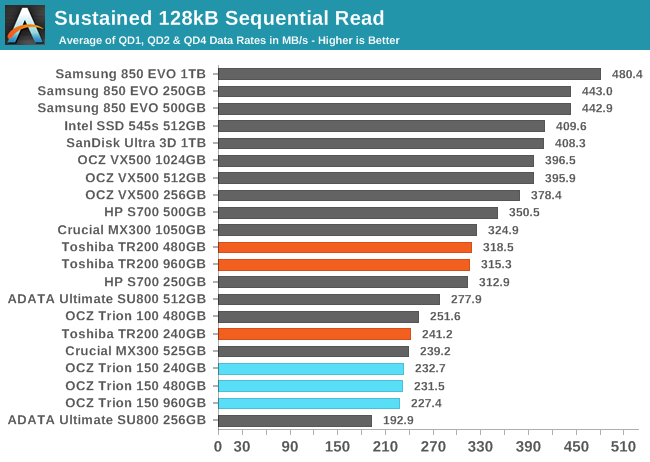
On the longer test of sequential reads, the larger two models of the TR200 perform quite similarly and are about average for a budget SSD. The 240GB is substantially slower, but still faster than all of the TR150 capacities and the 256GB ADATA SU800.
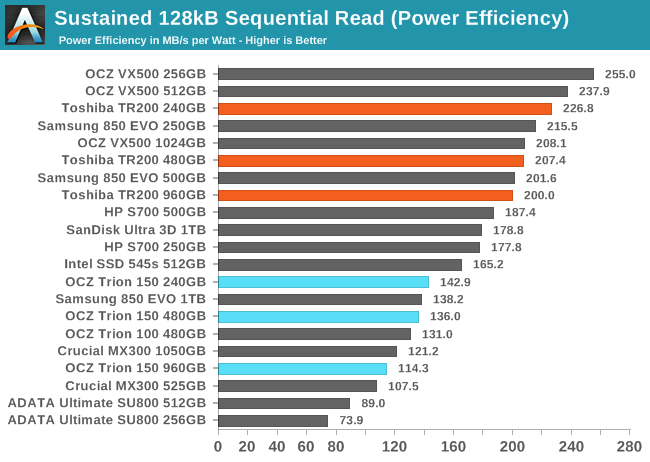
The power efficiency of the Toshiba TR200 is still above average, with the 240GB model in particular having a very good efficiency score. The HP S700 is not as efficient as the TR200 but is still reasonable, while the Crucial MX300 and ADATA SU800 score quite poorly on efficiency.
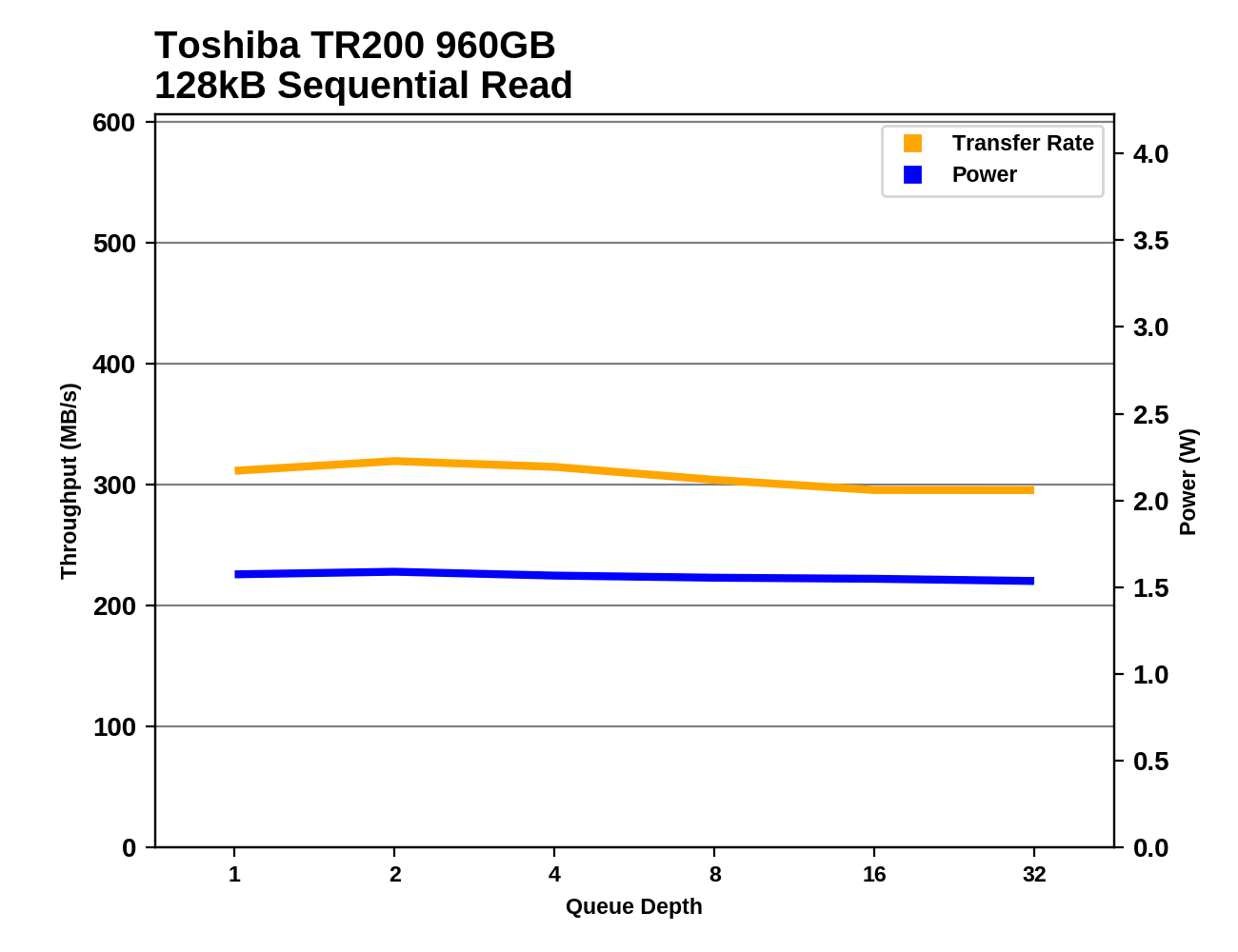 |
|||||||||
Performance is nice and flat across queue depths, with the exception that the 240GB TR200 is a bit slower at QD1 than at higher queue depths. Most drives are faster, but at least there's nothing funny happening with the TR200.
Sequential Write Performance
Our test of sequential write burst performance is structured identically to the sequential read burst performance test save for the direction of the data transfer. Each burst writes 128MB as 128kB operations issued at QD1, for a total of 1GB of data written to a drive containing 16GB of data.
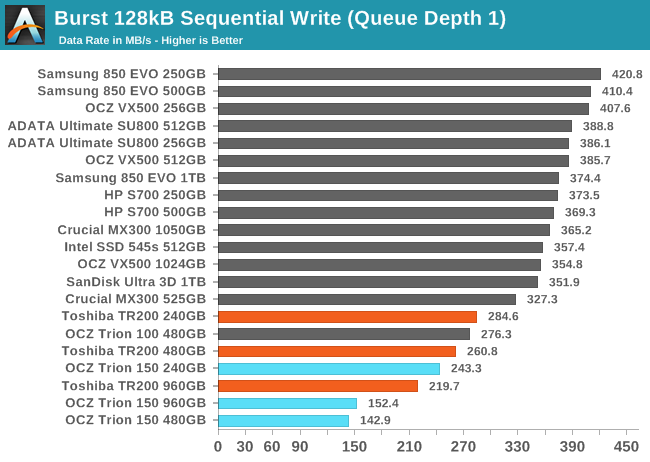
The burst sequential write performance of the TR200 is a significant improvement over the TR150, especially for the larger two capacities. They still have a bit further to go before catching up to the rest of the market: the TR/Trion series all stand out at the bottom of the chart.
Our test of sustained sequential writes is structured identically to our sustained sequential read test, save for the direction of the data transfers. Queue depths range from 1 to 32 and each queue depth is tested for up to one minute or 32GB, followed by up to one minute of idle time for the drive to cool off and perform garbage collection. The test is confined to a 64GB span of the drive.
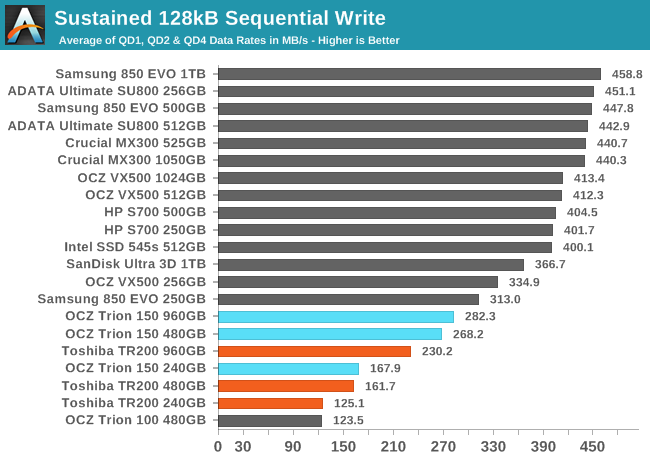
On the longer sequential write test, the TR200s end up worse off than their predecessors, not better. The Trion/TR series drives are still all the slowest, and the 240GB manages barely more than a quarter the performance of the 256GB ADATA SU800.
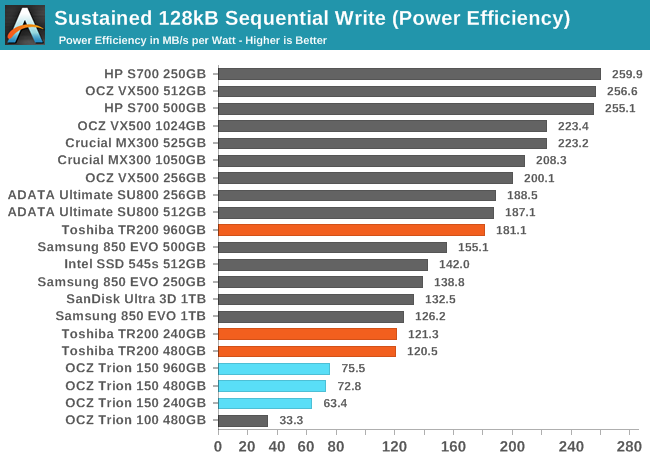
All capacities of the TR200 are far more efficient at sequential writes than their predecessors. This is especially true for the 960GB model, which is more than twice as efficient as its TR150 counterpart. The smaller models are still scoring poorly on efficiency, but are no longer major outliers.
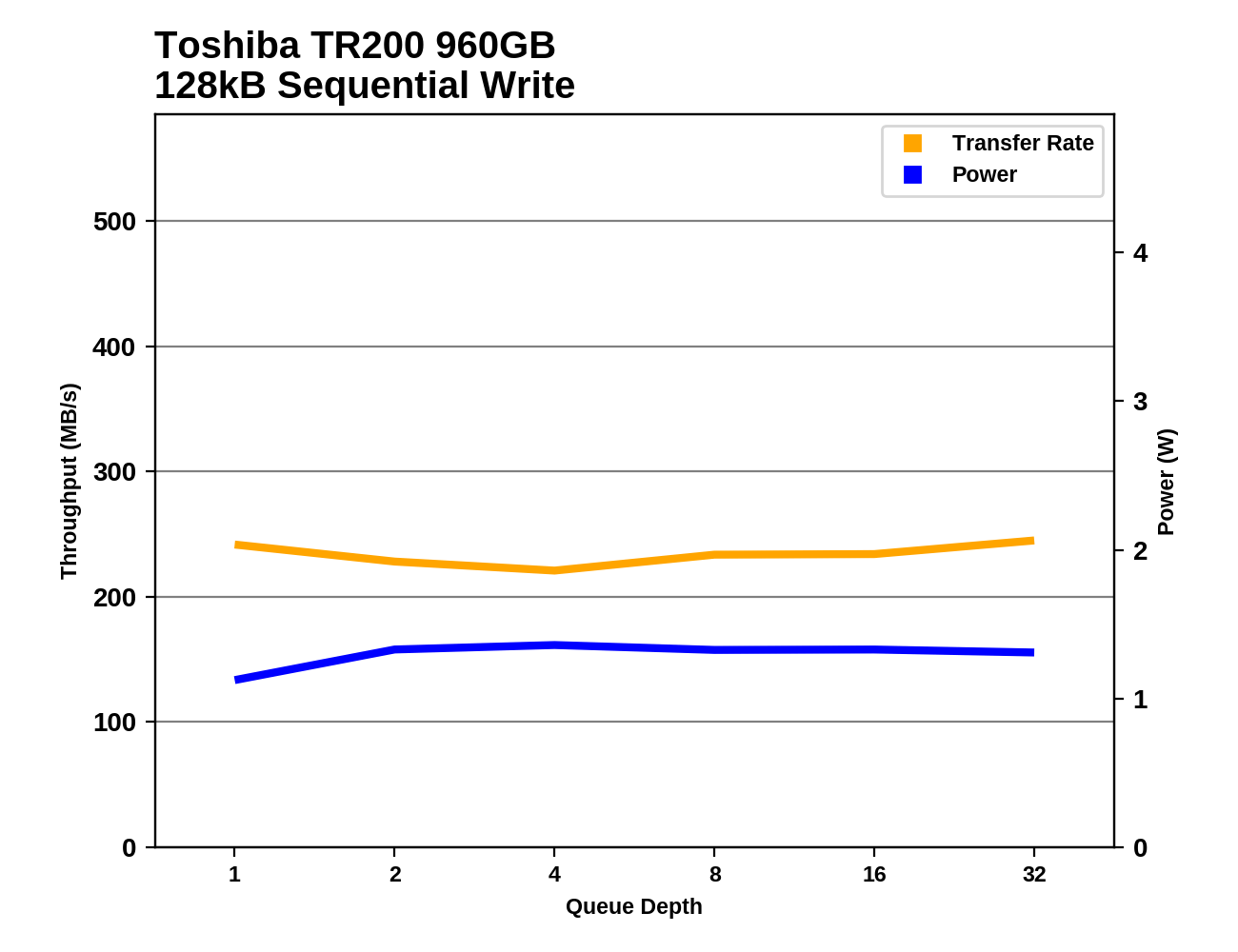 |
|||||||||
The sequential write performance of the 960GB TR200 varies a bit over the course of the test, but not as much as several other budget drives. All of the TR200s are pretty much in a class of their own offering lower performance and very low power consumption of just over 1W.










50 Comments
View All Comments
r3loaded - Wednesday, October 11, 2017 - link
Pwned by an 850 Evo but only $10 cheaper. Yay what a surprise.ddriver - Wednesday, October 11, 2017 - link
Cudos to toshiba for making an ssd that is as slow in sequential writes as a mechanical hdd. I can't imagine it was easy.It's a serious contender for "lousiest sata ssd of 2017".
masouth - Wednesday, October 11, 2017 - link
of just 2017?takeshi7 - Wednesday, October 11, 2017 - link
correction: slower than an hdd in sequential writes. But then again a lot of these cheap TLC drives have lower sustained write speed than HDDs. What really amazes me is that Toshiba actually made an SSD that's worse than the Crucial BX200. I never thought that would be possible.Samus - Wednesday, October 11, 2017 - link
At 1/10th the power consumption though. As hard as it is to defend this drive, it’s clear toshiba had a very specific goal in mind with this drive: cheap upgrades for cheap laptops. As an OEM supplier for many vendors (including even Apple) this drive is adequate for many sub-$500 laptops: being dramless makes power loss protection mostly unnecessary as it will likely recover from sram loss inside the controller, as the indirection table is mirrored off then back to the nand after each write.However, I’ve never been a fan of dramless controllers. Seams like a mind boggling corner to cut when the cost of 512mb DDR3 is $4.
Lolimaster - Wednesday, October 11, 2017 - link
Fact is Crucial MX300 is as cheap and way better, my way way way better,Samus - Sunday, October 15, 2017 - link
I've long stood by that assertion. Crucial and Samsung SSD's are the only mainstream drives worth considering. Sure, Sandisk, Intel, even Mushkin have their niche products, but Samsung and Crucial have no real "duds."Flunk - Wednesday, October 11, 2017 - link
Has Anandtech reviewed another budget SSD that's competitive with the 850 Evo, seems like that's the gold standard at the moment. I just bought one for my Mom for Christmas.theramenman - Wednesday, October 11, 2017 - link
The SanDisk Ultra 3D they reviewed a bit ago gets similar performance to a 850 Evo for $43 less (at least for the 1TB version).sonny73n - Thursday, October 12, 2017 - link
3 most valued SSD models currently on Amazon. One of them is the BX300 with capacity max out at 480GB which I can only compare it to the similar of the other 2.- Samsung 850 Evo 500GB $160
- SanDisk Ultra 3D 500GB $170
- Crucial BX300 480GB $145
The first 2 are made of TLC NAND and the BX300 is made of MLC. No brainer to pick the best one here.